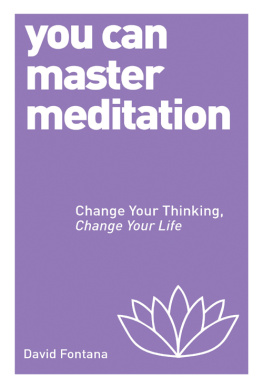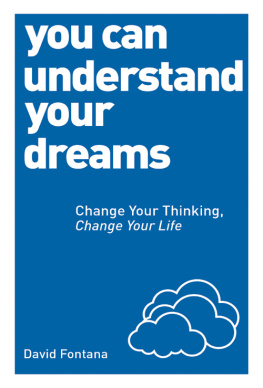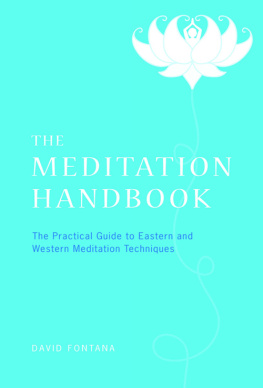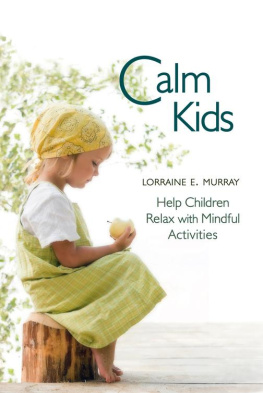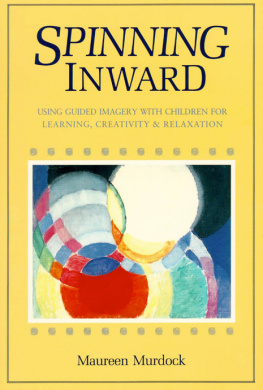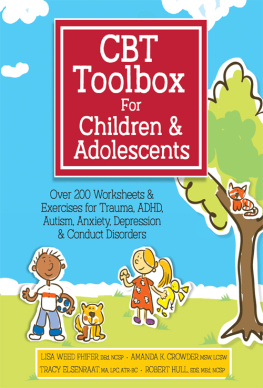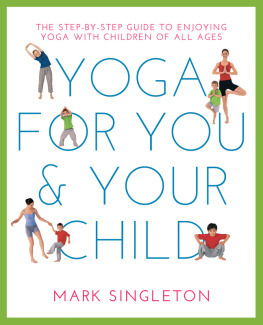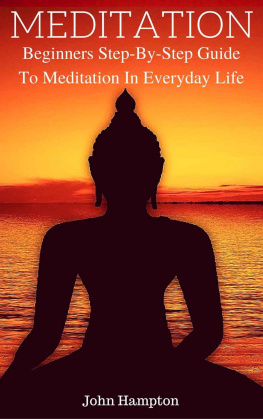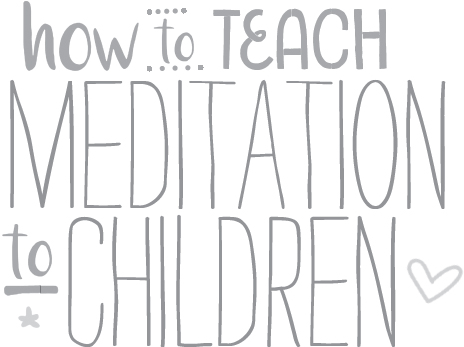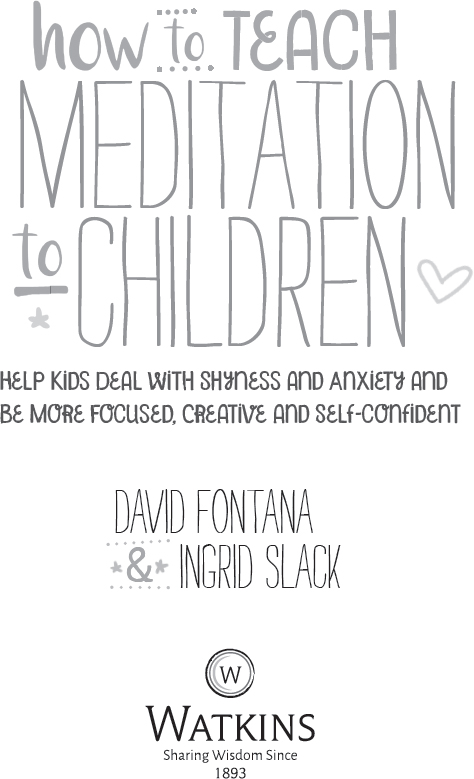This edition first published in the UK and USA 2017 by
Watkins, an imprint of Watkins Media Limited
19 Cecil Court
London WC2N 4EZ
First published by Element Books Limited 1997
Second edition published by Thorsons 2002
Third edition published by Watkins Publishing 2007
Design and typography copyright Watkins Media Limited 2017
Text copyright David Fontana and Ingrid Slack 1997, 2002, 2007, 2017
David Fontana and Ingrid Slack have asserted their right under the Copyright,
Designs and Patents Act 1988 to be identified as the authors of this work.
All rights reserved.
No part of this book may be reproduced or utilized in any form or by any means, electronic or mechanical, without prior permission in writing from the Publishers.
10 9 8 7 6 5 4 3 2 1
Designed and typeset by Glen Wilkins
Printed and bound in the United Kingdom
A CIP record for this book is available from the British Library
ISBN: 978-1-78678-087-4
www.watkinspublishing.com
This book is dedicated to all children and to the adults who love and care for them, in the hope that it will help them towards peaceful and fulfilling lives.
ACKNOWLEDGEMENTS
We would like to thank all the adults and children who have worked with us in meditation, particularly those who have let us quote their cases here. A special thank you goes to the staff and pupils in Kents Hill First School in Milton Keynes for their co-operation, flexibility and support.
FOREWORD
Life is not always easy for children these days. Schools are under huge pressure to perform, with children passing through a seemingly endless conveyer belt of cramming and assessment. A one-size-fits-all approach means that individuality can give way to conformity. Social media, advertising and peer pressure squeeze children in other directions. When they are not at school or doing homework, the lure of screens can sap much of the rest of the day, and keep children safely shut up indoors. Children are allowed less physical freedom and fewer hours for unrestricted play than ever before. This lack of self-directed time makes it hard for them to have space to be themselves. No wonder, then, that children, from the very young up to teenagers, are suffering from depression, stress and anxiety.
More and more people are waking up to the fact that meditation and mindfulness can help us to lead fuller, happier and more meaningful lives. Children are no exception to this. Like adults, they can benefit from meditation in a myriad of ways. It helps them learn to relate to themselves and each other more successfully, and allows them to get better at maintaining a mindful way of life.
Major research projects are currently studying the use of mindfulness in schools, which are already embracing meditation as part of their wellbeing programmes, and parents are looking for ways to introduce it at home. Meditation can help provide children with the tools they need to navigate the maze of modern adolescence and grow up into resilient, resourceful and compassionate adults.
But meditation is not just a magic pill that we can use to fix broken children, or even a broken school system or society. Yes, meditation may help children perform better in exams. Yes, it may help them become more sociable and more responsible. But we must not let mindfulness become another yardstick by which they will be measured. Meditation must be taught for the benefit of the children who will learn it, not as a cynical way to achieve better results or more manageable classrooms. We need to ensure that it is taught within a context of creativity, respect, compassion and resilience; and that meditation is offered to children for their sake, to help them become responsible happy adults masters of their own agenda, not that of school teachers or policy-makers.
If we sincerely want to raise childrens confidence and encourage qualities such as mindfulness, concentration and compassion, then we must show children that we value these qualities. We must also work hard to cultivate them in ourselves. We must embark on our own journeys of self-discovery and perseverance so that we can support others with integrity.
Through working with my own and other children, I have come to realize that we cannot effectively teach others how to set about observing and training minds if we have not first made a commitment to set our own house in order.
Yet, even if we are fully behind the concept and have an extensive personal meditation practice, it is not always clear how meditation can be introduced to children. It can be hard for younger children to get excited about sitting quietly especially when it is not immediately obvious what they might get out of it. Older children may shy away from the experience through fears it will make them feel self-conscious and vulnerable.
In this classic book, David Fontana and Ingrid Slack have set out a practical guide for introducing meditation to children. The authors discuss how to make meditation appealing and accessible. They present a range of exercises, both formal and informal, and differing ways to use them. Throughout their book they discuss the benefits of the different skills practised, and how children might relate to them in a real-life situation.
The book is sincere in intention, honest in its appraisal of the challenges teachers and parents might face, and is clearly drawn from a wealth of experience. It provides a great resource for those wanting to explore meditation with children, either at home or in the classroom. This book is just as, if not more, relevant today as it was when it was first published twenty years ago.
Amber Hatch, 2017
Meditation and parenting expert Amber Hatch is the author of the bestselling Mindfulness for Parents.
PREFACE
The interest aroused since the first appearance of this book and the many requests we have received for its continuing publication have amply confirmed our belief that children value the experience of meditation in their lives. The modern world seeks to dominate children with computer and other electronic games, with mobile phones and frenetic television programmes, with the result that the young are at increasing risk of moving ever further from the experience of being, that is from the experience of connecting fully with themselves, with other people, and with the natural world. Constantly bombarded by noise and by flashing images, constantly distracted by text messages, by mobile phone calls, by emails and by the internet, they have less and less time to pause and experience tranquillity. Where is the space for rest, for thought, for self-exploration, for the creation of harmony between body and mind, and for experiencing real intimacy with loved ones?
The feedback we have received from parents and teachers who have used this book indicates that many children not only find meditation of great benefit in their emotional and intellectual lives, but they also take readily to it. Moreover, we have been greatly encouraged by the eagerness of teachers and parents to use the meditative exercises given in the book with their children. Adults are quick to recognize that these exercises help children from the early years onwards to grow in maturity, self-confidence and self-management; they enhance the relationship children have with their peers and with the adults themselves because meditating together helps bring people of all ages closer to each other. In addition, teachers find that short sessions of meditation help to calm children, either during lessons or at the start and end, and that they can form a valuable feature of personal/social education programmes. Parents find that when used within the home such sessions are a welcome aid in helping young children prepare for sleep after enjoying bedtime stories.




